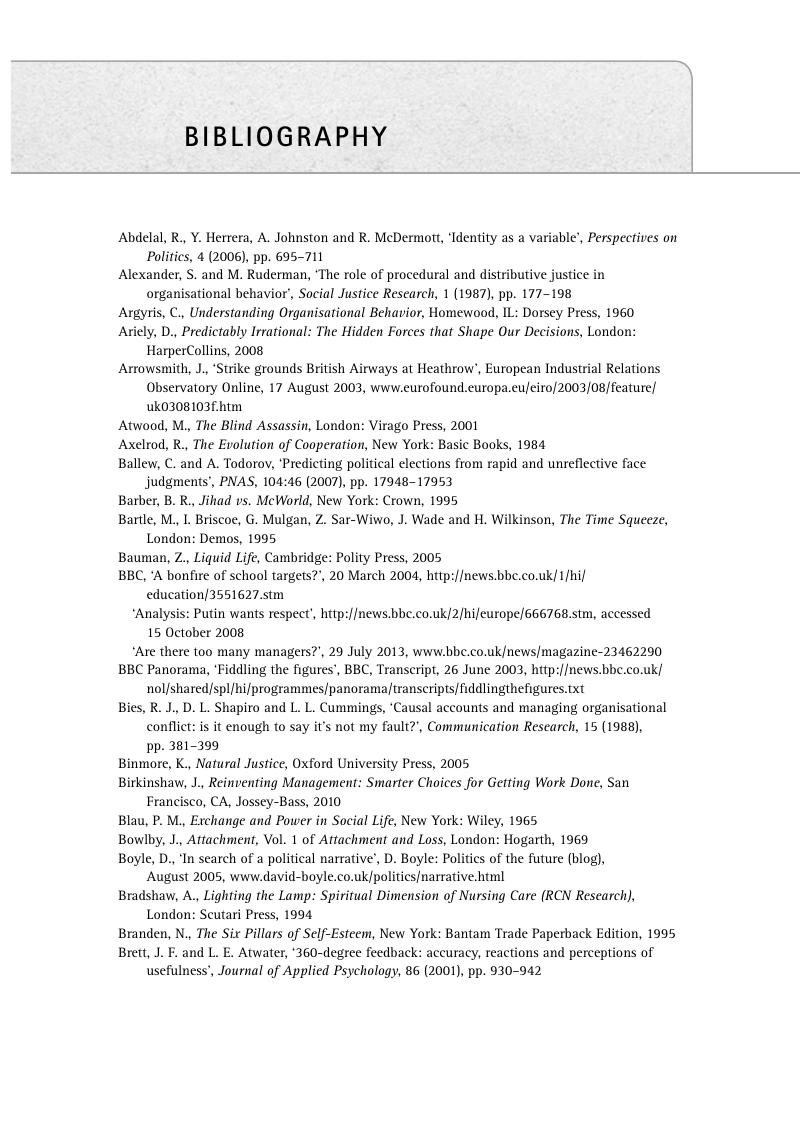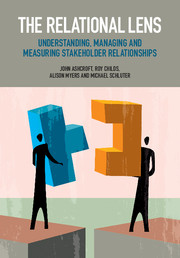Book contents
- The Relational Lens
- The Relational Lens
- Copyright page
- Contents
- Figures
- Tables
- Foreword by Vincent Neate
- Foreword by Paul Druckman
- Book part
- Introduction: The Dark Matter of Organisations
- 1 The Value and Importance of Relationships
- 2 Why Organisations Should Think Relationally
- 3 How to Measure Relationships
- 4 Directness: High Touch Organisation
- 5 Continuity: Organisation across Time
- 6 Multiplexity: Context for Breadth
- 7 Parity: Power, Balance, Fairness
- 8 Commonality: Overlap of Purpose
- 9 What Relational Proximity Builds
- 10 Relationships between Stakeholders
- 11 Managing, Measuring, Reporting, Regulating
- Epilogue
- Bibliography
- Index
- References
Bibliography
Published online by Cambridge University Press: 17 November 2016
- The Relational Lens
- The Relational Lens
- Copyright page
- Contents
- Figures
- Tables
- Foreword by Vincent Neate
- Foreword by Paul Druckman
- Book part
- Introduction: The Dark Matter of Organisations
- 1 The Value and Importance of Relationships
- 2 Why Organisations Should Think Relationally
- 3 How to Measure Relationships
- 4 Directness: High Touch Organisation
- 5 Continuity: Organisation across Time
- 6 Multiplexity: Context for Breadth
- 7 Parity: Power, Balance, Fairness
- 8 Commonality: Overlap of Purpose
- 9 What Relational Proximity Builds
- 10 Relationships between Stakeholders
- 11 Managing, Measuring, Reporting, Regulating
- Epilogue
- Bibliography
- Index
- References
Summary

Information
- Type
- Chapter
- Information
- The Relational LensUnderstanding, Managing and Measuring Stakeholder Relationships, pp. 223 - 233Publisher: Cambridge University PressPrint publication year: 2016
